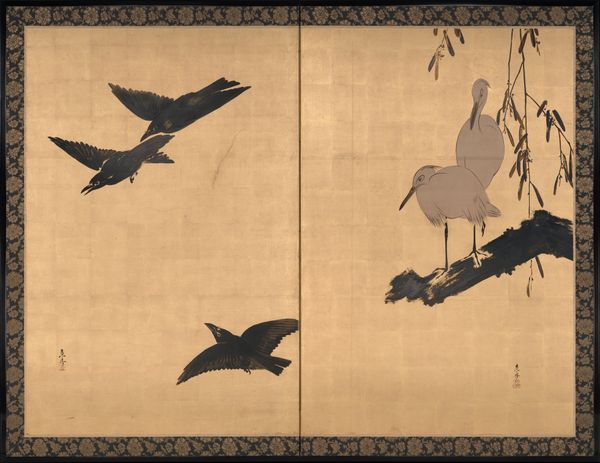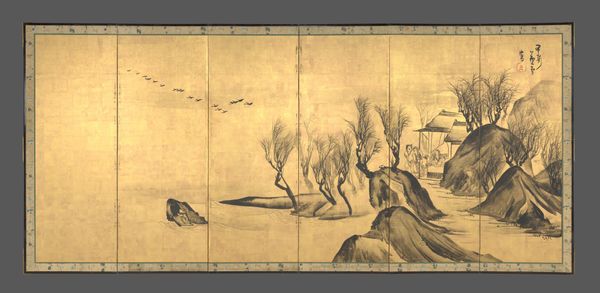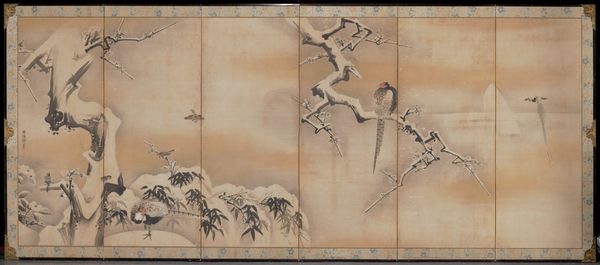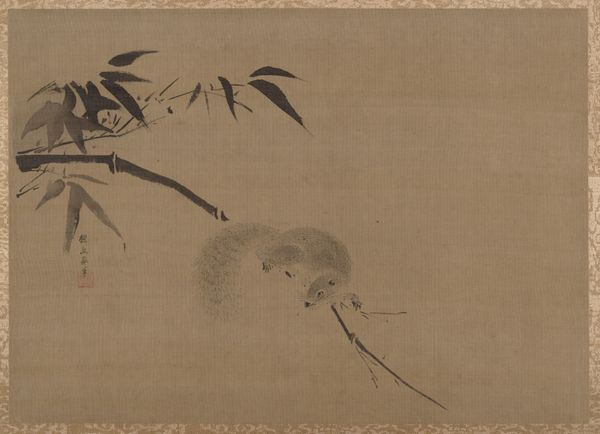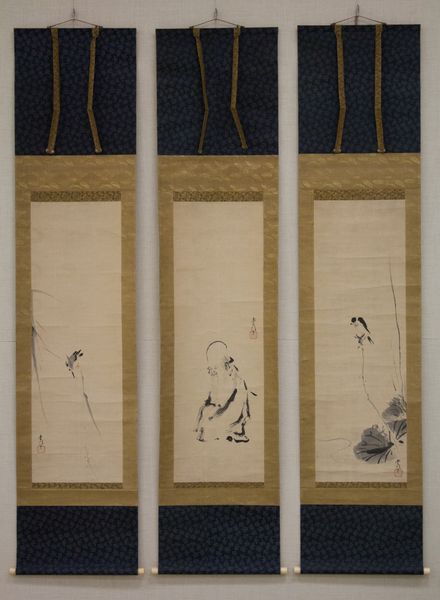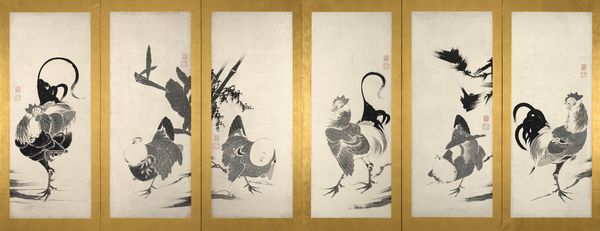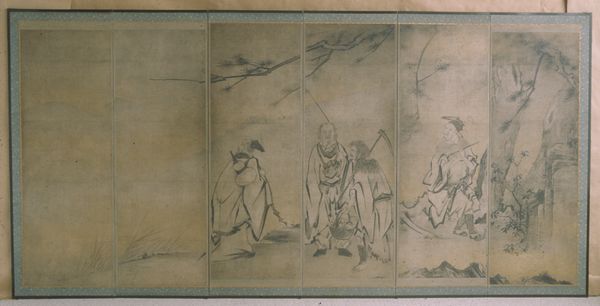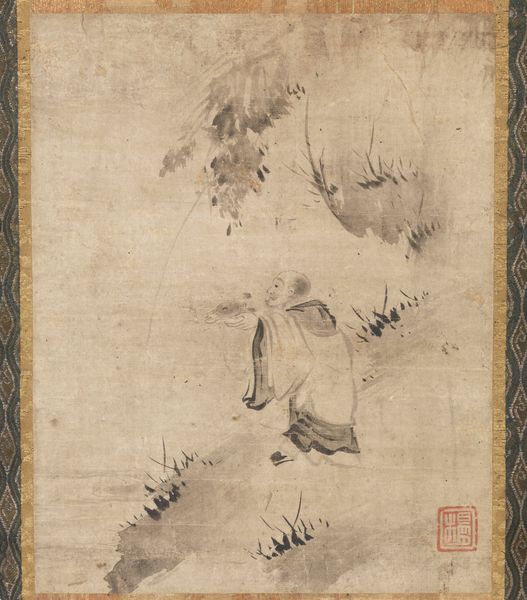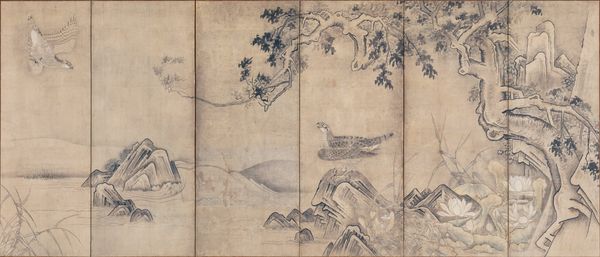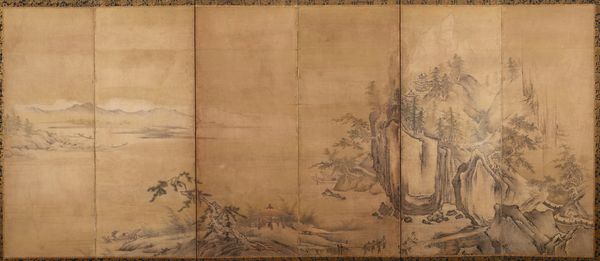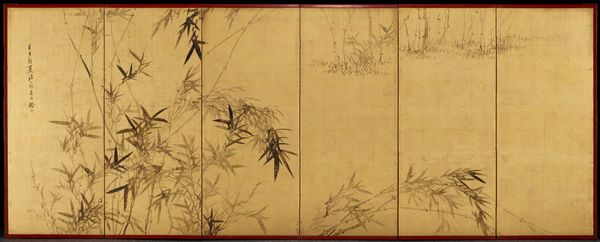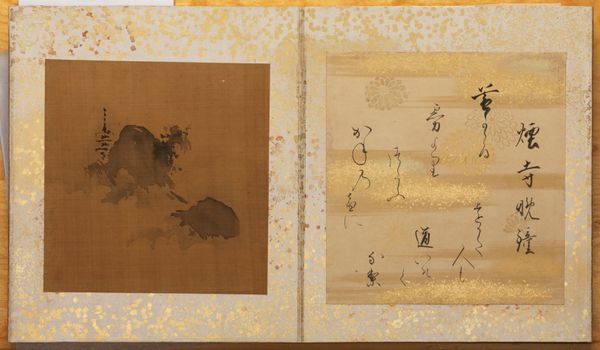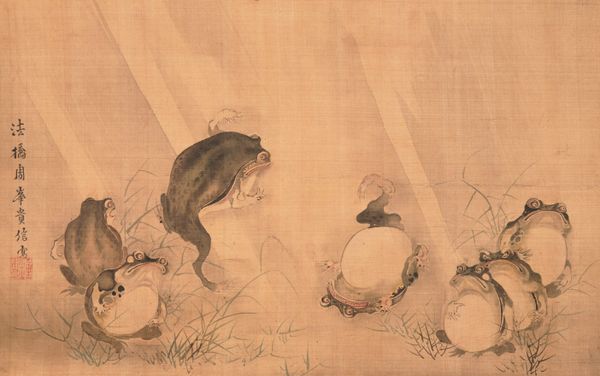
Huineng, the Sixth Patriarch of Zen, with Geese and Myna 1600 - 1644
0:00
0:00
painting, ink
#
ink painting
#
painting
#
asian-art
#
landscape
#
bird
#
japan
#
figuration
#
ink
#
calligraphy
Dimensions: Image (each): 42 3/8 × 18 1/4 in. (107.6 × 46.4 cm) Overall with mounting (each): 76 1/4 × 21 in. (193.7 × 53.3 cm)
Copyright: Public Domain
Unkoku Tōeki created these ink-on-paper paintings of Huineng, the Sixth Patriarch of Zen, with Geese and Myna, in seventeenth-century Japan. Tōeki lived during the Edo period, a time of relative peace and isolation. The renewed interest in Zen Buddhism, and its emphasis on meditation and mindfulness, deeply influenced the art and culture of this era. These paintings are a triptych, meant to be read together. In the center panel, Huineng sits in quiet contemplation, embodying the Zen ideal of inner peace. The birds, a myna on the left and geese on the right, add another layer to this narrative, perhaps symbolizing freedom and detachment from worldly concerns. Huineng was known for his radical teachings, which challenged established norms and promoted direct experience over scriptural authority. Consider how these paintings invite us to reflect on our own paths to enlightenment, urging us to embrace simplicity and find wisdom in the everyday. They also show Tōeki's engagement with the cultural and religious movements of his time, reflecting a deep sense of personal connection to the subject matter.
Comments
No comments
Be the first to comment and join the conversation on the ultimate creative platform.
